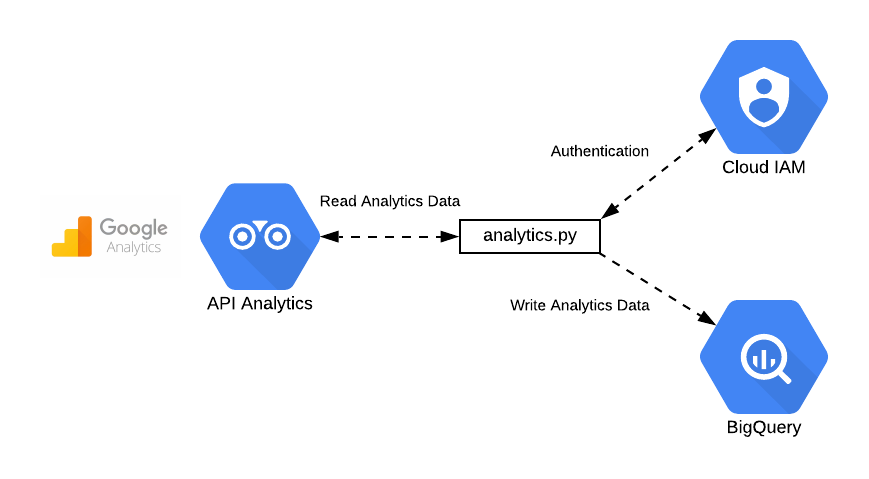
With Google recently announcing the sunsetting of Universal Analytics in July 2023, it’s vital that businesses implement Google Analytics 4 (GA4) no later than July 2022. This ensures your business has historical data for year-on-year comparisons after UA is switched off.
What’s changing?
If you have a UA Google Analytics property, you will have begun to see a banner every time you visit GA warning you that the current version of GA will no longer collect data from 1st July 2023. You may be wondering why Google is giving you nearly 15 months’ notice to upgrade, but in fact, you only have a few months to upgrade to GA4. Ideally, this should happen as soon as possible, and by July 2022.
Why is it important?
If you don’t migrate key events over to GA4 by July 2022, then you run the risk of not having year-on-year comparisons when you are required to move over to GA4 in July 2023. Utilising year-on-year comparisons is important to most businesses as it identifies trends in markets and gives you better context on how your website is performing, relative to past performance.
Even if you don’t migrate everything over to GA4 immediately, we would recommend migrating key conversion events (such as searches, add to baskets, begin checkout and transactions) by July 2022.
How do I migrate to Google Analytics 4?
When you try and create a new property in Google Analytics, the default option is GA4, and has been for some time.
There are many ways to implement GA4 depending on your technological set up. Setting up a GA4 property from a UA property isn’t actually that hard – there’s a simple step-by-step wizard guide within the Admin section of Google Analytics which can be accessed by clicking on “GA4 Setup Assistant”, which you can see in the screenshot below. Google has some useful instructions here.

One key callout here is that if you’re already using the gtag.js implementation for UA, you can select the option “Enable data collection using your existing tags”. If you select this option then this will create a connected site tag which means GA4 will essentially re-use the existing tags from UA. However, one down-side to this is that it is a “lift and shift” approach and we would recommend reviewing all your tracking once this is complete to see if it is suitable for your reporting needs.
If you currently use the analytics.js implementation of UA, then you will need to start your GA4 migration from scratch.
If you use GTM for your UA implementation then you may be able to re-use some of your existing set-up.
What’s different between Universal Analytics and GA4?
Event-based model
The biggest change in GA4 is the data structure. Every hit is now an event – including pageviews. The event structure is also much more flexible. Events in GA4 support up to 25 parameters, which replaces custom dimensions and the event category, action, and labels.
Web and app data in the same property
GA4 has been built with cross-device and cross-platform reporting. Due to the new event-based model web and app data can now sit in the same property.
No monthly hit limits
At the time of writing, there are no hit limits in GA4. In Universal Analytics, there is a limit of 10 million monthly hits which causes frequent sampling issues for clients with larger datasets.
Free BigQuery
There is a free instance of BigQuery available for GA4. BigQuery enables you to access the raw data behind the GA4 interface and allows you to write your own queries to analyse the data.
More custom reporting options
Whilst some of the default reports in Universal Analytics that you may be used to no longer exists, the custom reporting section in GA4 is much more powerful and flexible.
How can Code help?
Re-visit your digital measurement strategy
We do not simply “lift and shift” your current tracking set-up from Universal Analytics. We will work with you to understand what KPIs need measuring and create a tracking proposal which works for you. You will have the final say.
Use Google Tag Manager
Google Tag Manager is still the most effective way to implement GA4. We have in-house GTM specialists and developers who will implement and QA the agreed tracking proposal. We’ll work with your developers to future-proof the GTM implementation and ensure it doesn’t slow down your site.
Configure the GA4 interface
We will set up the GA4 interface to ensure everything is ready for you to report on.
Provide GA4 training
We will explain the key differences between Universal Analytics and GA4 and provide you with an overview of the GA4 interface and how to report using it. This will be tailored to your needs.
. . .
Need advice on implementing Google Analytics 4 or seeking a free consultation? Email hello@codecomputerlove.com or send us a message here.








